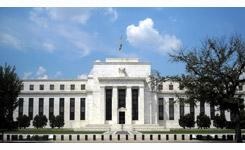January FOMC Minutes Explain Gold Demand in 2016

 Yesterday, the minutes of the Federal Reserve's January meeting were released. What do they say about the Fed’s stance and what do they mean for the gold market?
Yesterday, the minutes of the Federal Reserve's January meeting were released. What do they say about the Fed’s stance and what do they mean for the gold market?
Fed Worried by Global Turmoil
The recent minutes show that Fed officials were worried about the future of the U.S. economy. Although they cited the strengthening of the labor market, they acknowledged that domestic financial conditions had tightened since December:
Participants also discussed a range of issues related to financial market developments. Almost all participants cited a number of recent events as indicative of tighter financial conditions in the United States; these events included declines in equity prices, a widening in credit spreads, a further rise in the exchange value of the dollar, and an increase in financial market volatility. Some participants also pointed to significantly tighter financing conditions for speculative-grade firms and small businesses, and to reports of tighter standards at banks for C&I and CRE loans. The effects of these financial developments, if they were to persist, may be roughly equivalent to those from further firming in monetary policy. Participants mentioned several apparent factors underlying the recent financial market turbulence, including economic and financial developments in China and other foreign countries, spillovers in financial markets from stresses at firms and in countries that are producers of energy and other commodities, and an increase in concerns among market participants regarding the prospects for domestic economic growth.
Well, it does not sound too optimistic. Next fragments are even better, as a few FOMC members admitted that the Fed had created the stock market bubble which just burst. Indeed, “a couple of participants pointed out that the recent decline in equity prices could be viewed as bringing equity valuations more in line with historical norms”.
Fed Notices Decline in Risk-Appetite
It turned out that the U.S. central bank is a gold market expert, although it was reluctant to mention explicitly the shiny metal. Instead, the Fed officials pointed out that the recent financial developments “increased reluctance to hold risky assets” and increased “safe-haven demands amid the market turbulence”. They mentioned Treasuries as beneficiaries of the reduced risk appetite, but forgot about gold: “part of the decline [in Treasuries yields] likely also reflected an increase in safe-haven demands for low-risk and highly liquid assets amid the turbulence in financial markets”. Indeed, the recent financial turmoil associated with the energy sector and China reduced demand for risky assets and increased safe-haven demand for gold.
You know nothing, Fed
The Fed officials sounded much more dovish than in December, however, they did not clearly specify their stance:
“Most participants indicated that it was difficult to judge at this point whether the outlook for inflation and economic growth had changed materially, but they thought that uncertainty surrounding the outlook had increased as a result of recent financial and economic developments.”
It’s really funny that the most important central bank in the world cannot say anything about the recent financial turmoil, but that the uncertainty rose. We are curious what sophisticated mathematical models had been used to find out that the “uncertainty surrounding the outlook increased”. We are grateful that we have you, Fed, with us, always prone to insightful remarks. Instead, the U.S. central bank dictating market reactions (remember the adage “do not fight the Fed”?), we have now a bunch of undecided and data-dependent guys incessantly watching market conditions and waiting for Godot, i.e. rising inflation once ‘temporary’ declines in energy prices and the prices of non-energy imports dissipate.
Conclusions
The take-home message is that the minutes of the Federal Reserve's January meeting show that the Fed officials were worried about the economic outlook. They were so optimistic in December that they decided to raise interest rates, but within just one month everything changed. Now, the U.S. central bankers are not sure about the outlook, since uncertainty rose and it is very difficult to forecast uncertain processes. For us, the minutes are dovish and, importantly, more dovish than the January FOMC monetary policy statement. Although the Fed officials cited the strengthening of the labor market and some members noted that wage pressures had picked up, several central bankers were concerned that policy was less well positioned to respond to shocks and a couple of them called for direct evidence of inflation before further hiking rates. Thus, the minutes should support the price of gold (indeed, gold rose after the minutes were released). The tightening cycle, if it continues at all, would be very gradual and unhurried. Moreover, the Fed’s worries should not calm investors. A slower rate hike pace and high risk-aversion should increase demand for the yellow metal. However, investors should remember that fear-based purchases of gold may be short-lived since the money flowing into the gold market from stocks or other risky assets may quickly reverse after a change in risk perceptions.


















